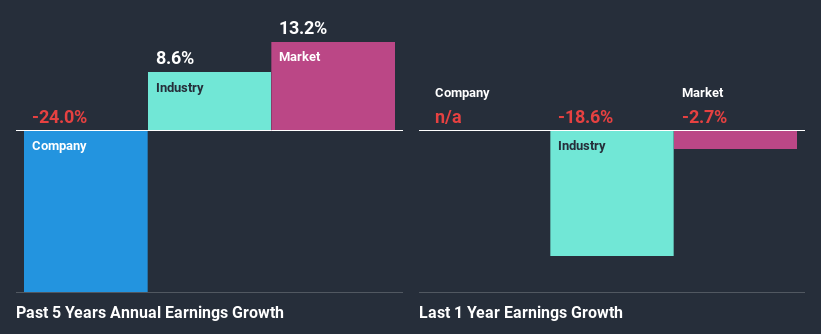Corteva, Inc.'s (NYSE:CTVA) Has Performed Well But Fundamentals Look Varied: Is There A Clear Direction For The Stock?

Corteva's (NYSE:CTVA) stock is up by 8.4% over the past three months. Given that the stock prices usually follow long-term business performance, we wonder if the company's mixed financials could have any adverse effect on its current price price movement Particularly, we will be paying attention to Corteva's ROE today.
Return on Equity or ROE is a test of how effectively a company is growing its value and managing investors’ money. In simpler terms, it measures the profitability of a company in relation to shareholder's equity.
Check out our latest analysis for Corteva
How Is ROE Calculated?
ROE can be calculated by using the formula:
Return on Equity = Net Profit (from continuing operations) ÷ Shareholders' Equity
So, based on the above formula, the ROE for Corteva is:
1.9% = US$478m ÷ US$25b (Based on the trailing twelve months to June 2020).
The 'return' is the income the business earned over the last year. That means that for every $1 worth of shareholders' equity, the company generated $0.02 in profit.
What Has ROE Got To Do With Earnings Growth?
Thus far, we have learned that ROE measures how efficiently a company is generating its profits. Based on how much of its profits the company chooses to reinvest or "retain", we are then able to evaluate a company's future ability to generate profits. Generally speaking, other things being equal, firms with a high return on equity and profit retention, have a higher growth rate than firms that don’t share these attributes.
Corteva's Earnings Growth And 1.9% ROE
It is quite clear that Corteva's ROE is rather low. Even when compared to the industry average of 10%, the ROE figure is pretty disappointing. Given the circumstances, the significant decline in net income by 24% seen by Corteva over the last five years is not surprising. We believe that there also might be other aspects that are negatively influencing the company's earnings prospects. Such as - low earnings retention or poor allocation of capital.
However, when we compared Corteva's growth with the industry we found that while the company's earnings have been shrinking, the industry has seen an earnings growth of 8.6% in the same period. This is quite worrisome.
The basis for attaching value to a company is, to a great extent, tied to its earnings growth. It’s important for an investor to know whether the market has priced in the company's expected earnings growth (or decline). By doing so, they will have an idea if the stock is headed into clear blue waters or if swampy waters await. Is CTVA fairly valued? This infographic on the company's intrinsic value has everything you need to know.
Is Corteva Making Efficient Use Of Its Profits?
Despite having a normal three-year median payout ratio of 39% (where it is retaining 61% of its profits), Corteva has seen a decline in earnings as we saw above. So there might be other factors at play here which could potentially be hampering growth. For example, the business has faced some headwinds.
Only recently, Corteva stated paying a dividend. This likely means that the management might have concluded that its shareholders have a strong preference for dividends. Upon studying the latest analysts' consensus data, we found that the company's future payout ratio is expected to drop to 28% over the next three years. The fact that the company's ROE is expected to rise to 6.3% over the same period is explained by the drop in the payout ratio.
Conclusion
Overall, we have mixed feelings about Corteva. While the company does have a high rate of reinvestment, the low ROE means that all that reinvestment is not reaping any benefit to its investors, and moreover, its having a negative impact on the earnings growth. Having said that, looking at current analyst estimates, we found that the company's earnings growth rate is expected to see a huge improvement. To know more about the latest analysts predictions for the company, check out this visualization of analyst forecasts for the company.
This article by Simply Wall St is general in nature. It does not constitute a recommendation to buy or sell any stock, and does not take account of your objectives, or your financial situation. We aim to bring you long-term focused analysis driven by fundamental data. Note that our analysis may not factor in the latest price-sensitive company announcements or qualitative material. Simply Wall St has no position in any stocks mentioned.
Have feedback on this article? Concerned about the content? Get in touch with us directly. Alternatively, email editorial-team@simplywallst.com.

 Yahoo Finance
Yahoo Finance 
